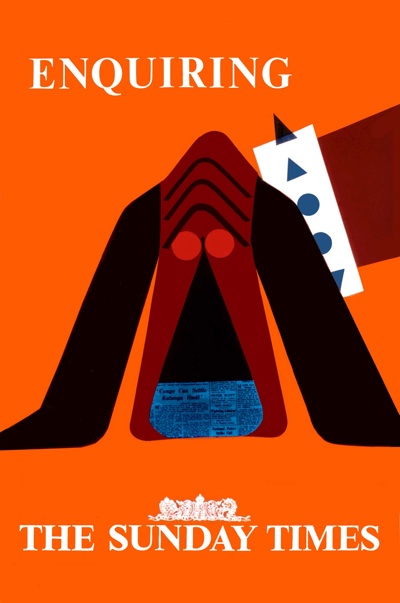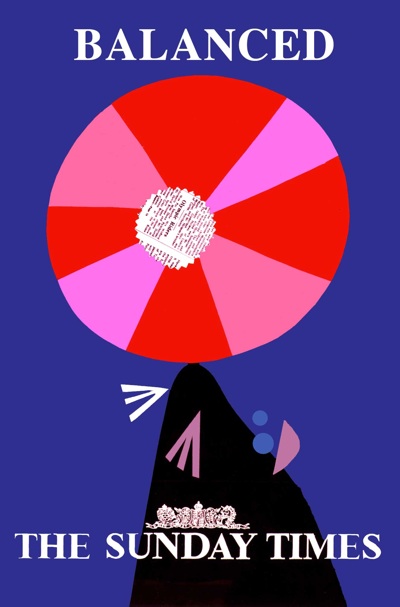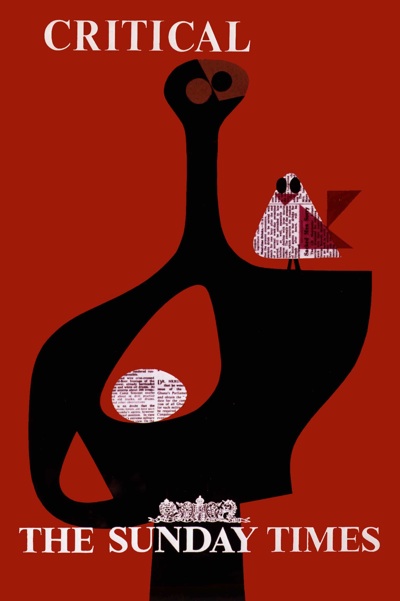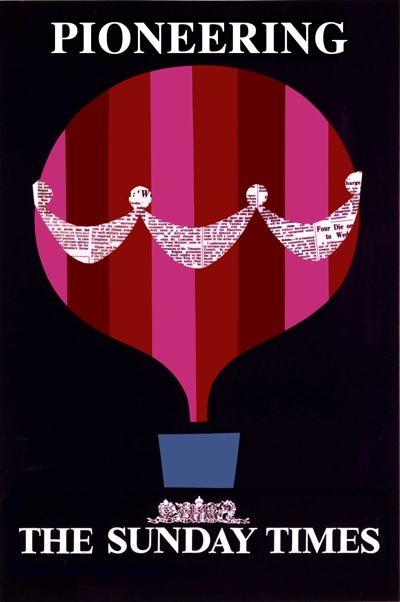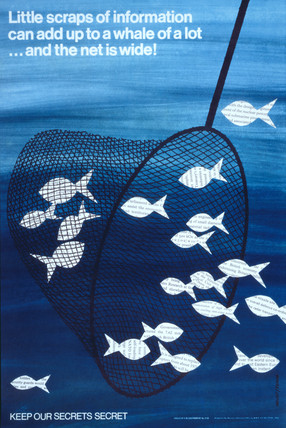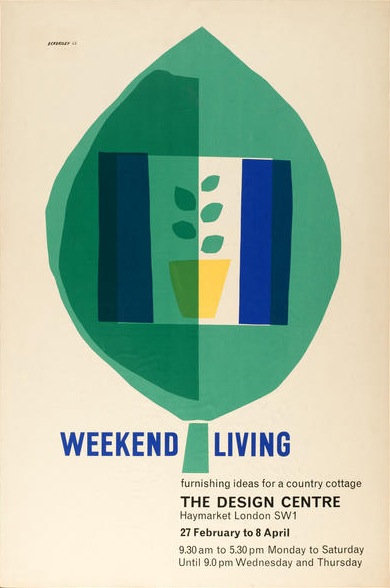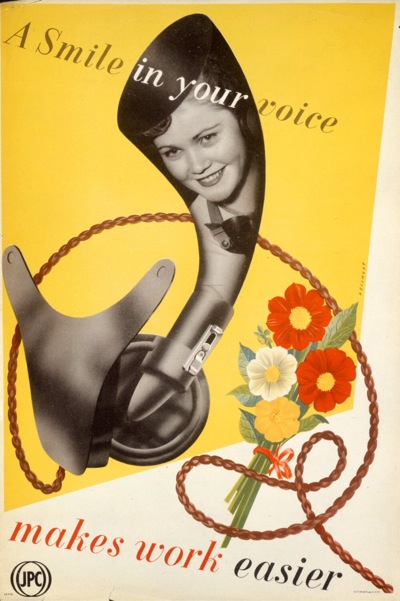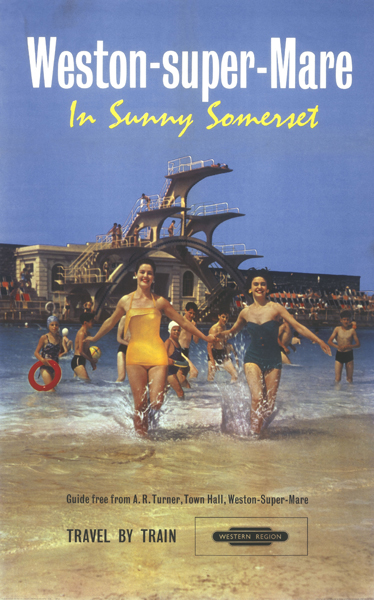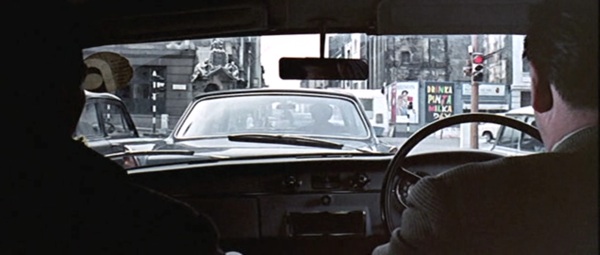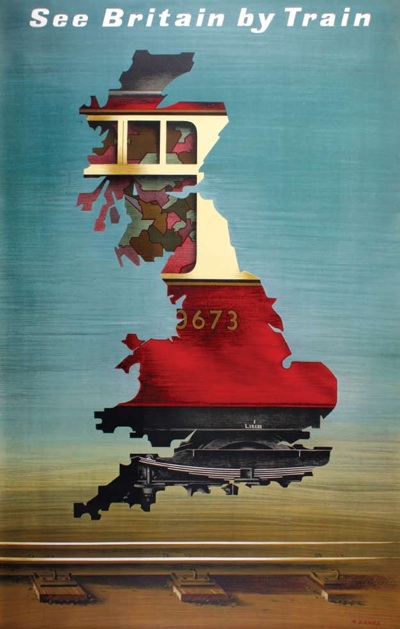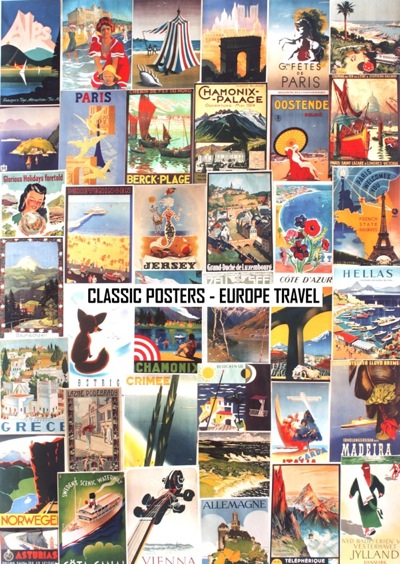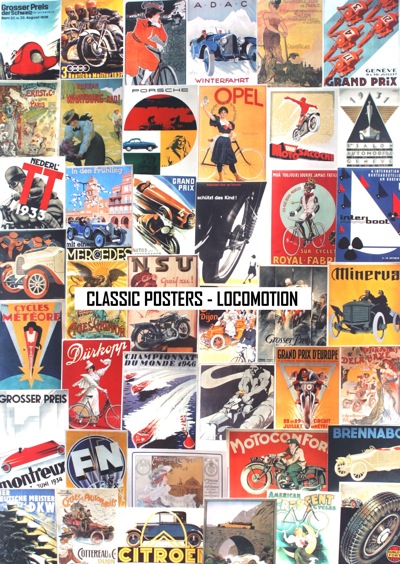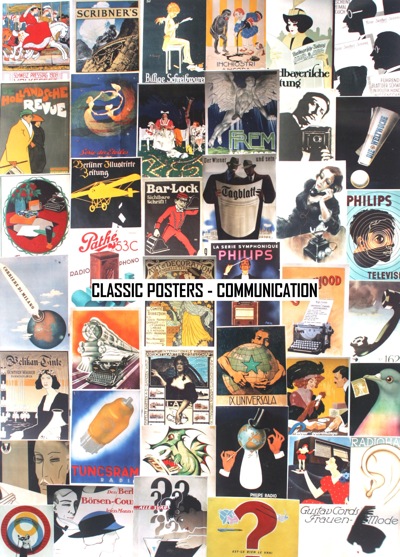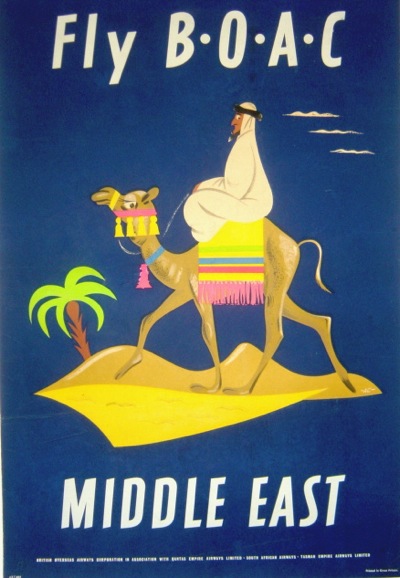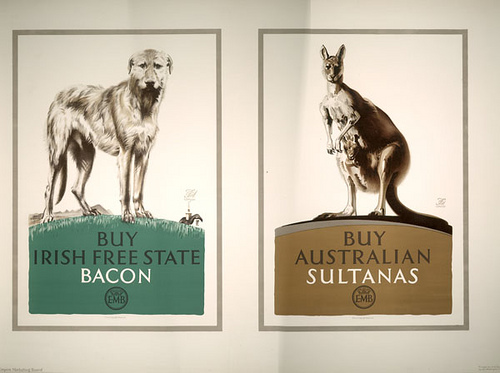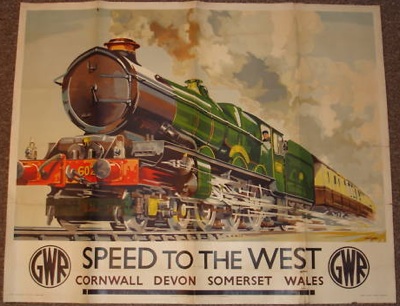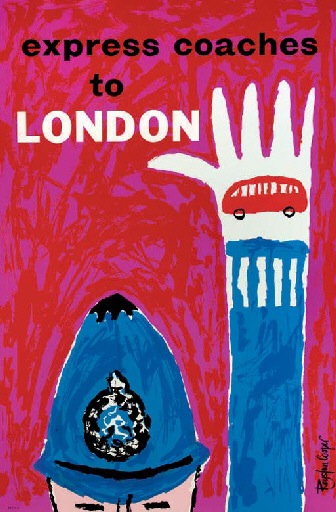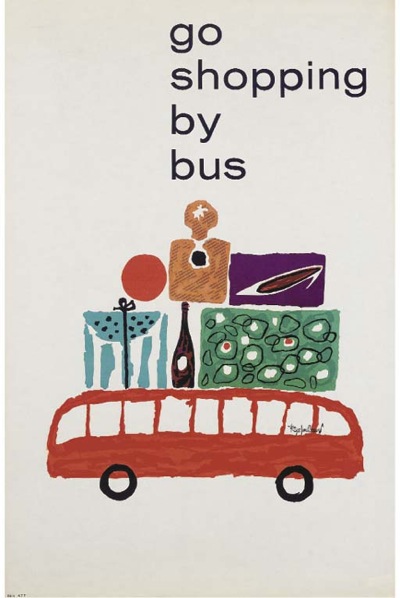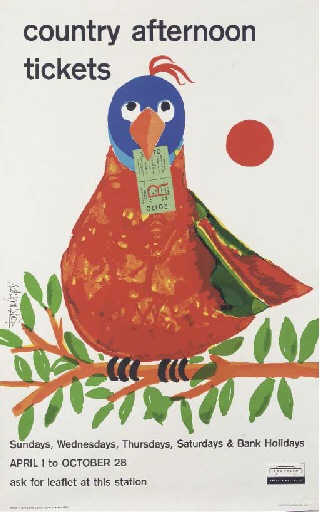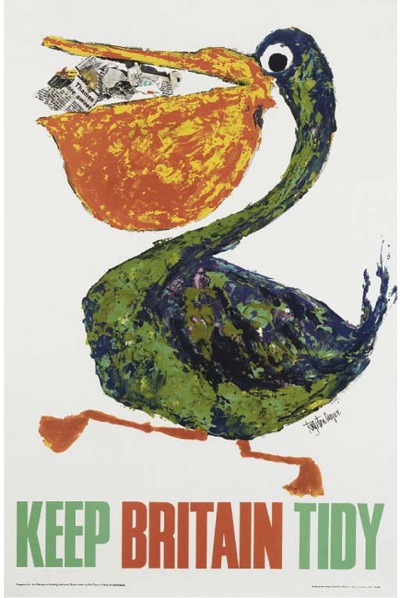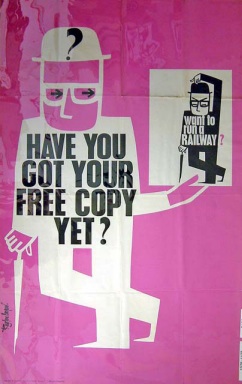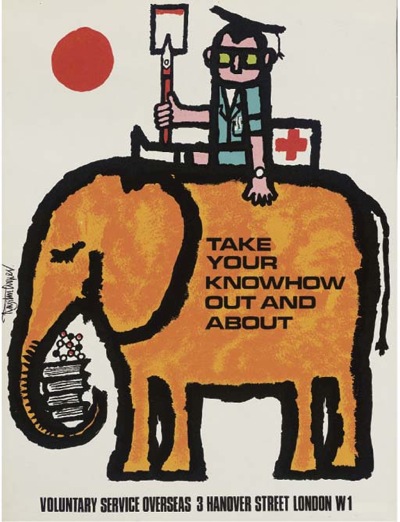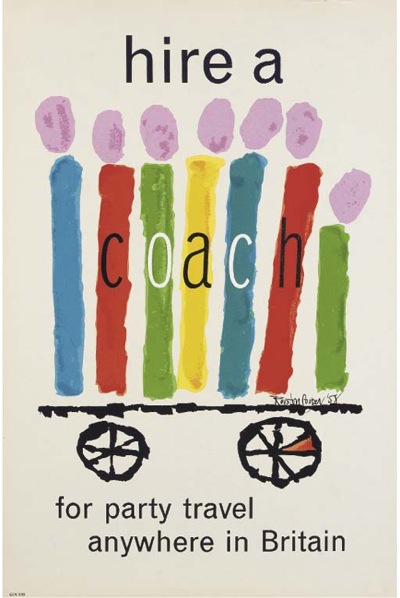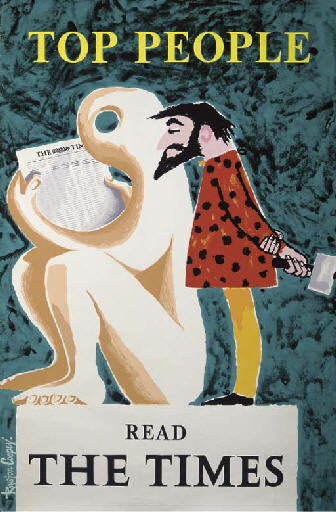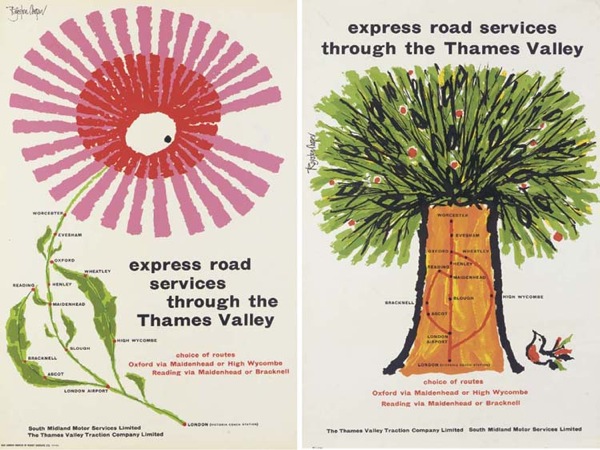As promised a while back, the moderately personal biography from Tom Eckersley : A Life in Design, slightly edited down for your entertainment and education. With some pretty pictures too.

LCP Exhibition poster, 1979
Tom Eckersley OBE RDI AGI was born in Lowton, Lancashire on 30 September 1914. His birth preceded that of the concept of ‘graphic design’ as it is understood today, which, as Tom observes, had its roots in the twenties and thirties. Tom began his career at what he recalls as “that stimulating time when certain artists, supported by enlightened clients, saw opportunities to use their art and their vision to solve communication problems. They began to realise the many exciting visual possibilities that could be derived from the major art movements taking place in Europe between the wars.”

Press advertisement for paper manufacturers, c1965
Tom’s parents were great readers, their house was full of books on all subjects, and Tom spent a lot of his childhood reading and drawing. At his mother’s suggestion, he enrolled at Salford Art School at the age of 16. Here his artistic abilities and his dedicated approach to work were recognised and he was awarded the Heywood medal for best student. Here it was too that he met fellow student Eric Lombers, with whom he came to London in 1934 aged 20, to embark upon a career as a freelance poster designer.

Eckersley Lombers, London Transport 1935
The two shared a tremendous enthusiasm for their art and for the poster. “The early thirties made a strong and lasting impression on me,” Tom reflects, “helping to shape my attitude to graphic work. At that time the poster was perhaps the most significant form of publicity, the great Cassandre and other French designers produced avant-garde posters, as did McKnight Kauffer and Hans Schleger in England. This greatly influenced me and I soon became seriously involved in poster design.”
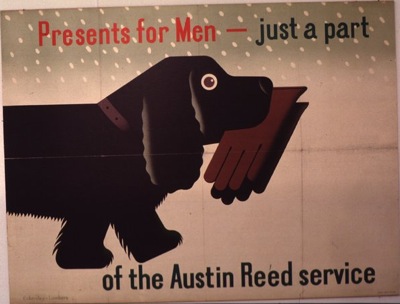
Eckersley Lombers, Austin Reed poster, 1938
The Eckersley-Lombers team was fast established among leading poster artists at this exciting time in the history of commercial design. Certain clients and advertising agencies were looking to artist to produce material that was both functional and aesthetically pleasing, and the team was commissioned by Shell, the BBC, London Transport, the GPO, Austin Reed and advertising agency W S Crawford. Tom and Eric also worked as visiting lecturers in poster design at the Westminster School of Art.

Eckersley Lombers, ARP poster, 1939
When war broke out the volume of commercial advertising declined. Tom and Eric joined the Royal Air Force and the Army respectively and so their partnership came to an end. Tom continued his creative output in the early war years with a powerful set of posters for the Royal Society for the Prevention of Accidents.

ROSPA, 1945
The ideas were conceived whilst he worked in camp, as a cartographer, and executed in a makeshift studio during 24-hour home leaves. Later he transferred to the Publicity Section of the Air Ministry, lived at home, and did work for a number of clients, including the GPO, an association which had begun before the war and continued for many decades after.
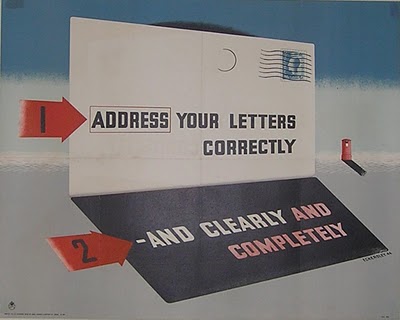
GPO, 1944
In 1948 Tom was awarded the OBE for services to British poster design. He had reached the top of his profession and many a ‘man in the street’ who did not know the Eckersley name was familiar with his posters. Tom’s flawless clarity of purpose, his rich imagination and his gentle humour had impressed many messages upon the public: that they should avoid industrial injuries, shave with Gillette razors, dress at Austin Reed and fill their cars with Shell, to name but a few.
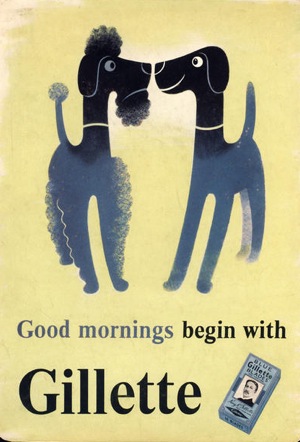
Magazine advertisement for Gillette, early 1950s
His great qualities had created lasting images that pleased, amused and were rcalled and talked about long after the campaigns had run their time. Tom’s international reputation was established too, and in 1950 he was elected member of the Alliance Graphique Internationale.
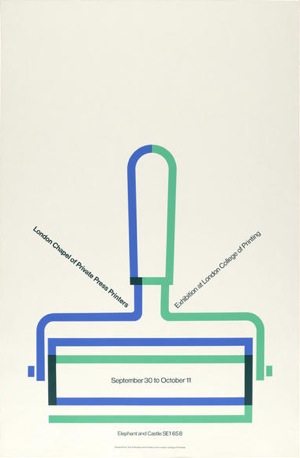
LCP Exhibition poster, n.d.
In 1957, Tom became Head of Design at the London College of Printing, a post which he held until 1977, whilst designing posters for a number of clients, some new, like Cooks and UNICEF, and some of whom, like London Transport and W S Crawford, had first commissioned his work before the war.
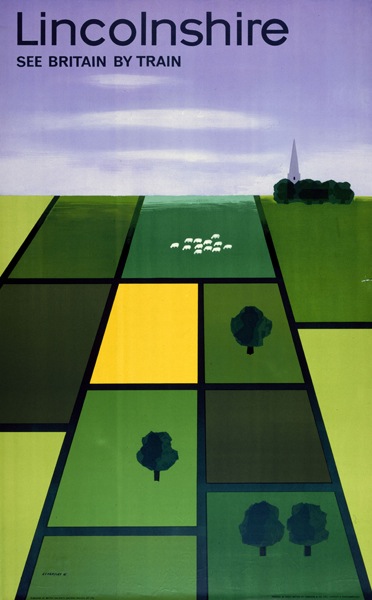
Lincolnshire, British Railways, 1961
[This biography was written in 1994, Tom Eckersley died in 1997. All images come from the Eckersley archive at the University of the Arts.]
Addendum: I carefully typed all of this out, and then found another, possibly even more interesting, biography as a PDF. So now you can choose between them.


